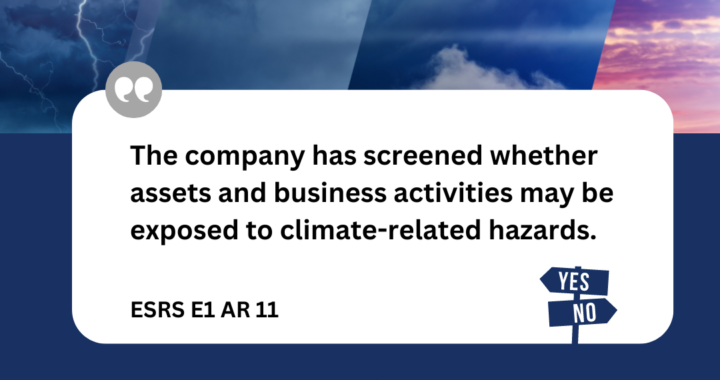CSRD requires companies to share how they are assessing their climate-related risks and how these risks could affect financial performance.
It will be a key area of scrutiny for the financial market and insurers, as there has been a sevenfold increase in reported losses from climate disasters since the 1970s.
Resent research has found that the economic damage brought by climate change is “six times worse than previously thought, with global heating set to shrink wealth at a rate consistent with the level of financial losses of a continuing permanent war”.
Rising temperatures, heavier rainfall and more frequent and intense extreme weather are projected to cause $38tn of destruction each year by mid-century.
In improving disclosures, critical information will be available for boards, management, investors and stakeholders, informing strategy development, financial planning and allocation of capital.
It can also provide an opportunity to attract investors by demonstrating climate-related opportunities and the resilience of the company.
Under CSRD the company will have to reply Yes or No to these two questions (ESRS E1 AR 11):
⭕The company has screened whether assets and business activities may be exposed to climate-related hazards.
⭕ The company has assessed the extent to which assets and business activities may be exposed and are sensitive to identified climate-related hazards.
In addition, the company will need to learn to disclose (ESRS E1-9):
- the monetary value of assets at material physical risk before considering climate change adaptation actions, divided into acute and chronic risk
- net revenue from business activities at material physical risk
- estimated amount of potentially stranded assets.
Extreme weather is causing loss of property, destruction of assets and business interruptions, with financial effects hitting our businesses.
To get your climate-related physical risks under control:
- Create a register with all your physical assets (offices, factories, warehouses, etc.) and the GPS coordinates for each location.
- Purchase reliable science-based climate hazard scores for each location.
- Assess, prioritize and manage your risk exposure.
There are easy-to-use tools and science-based data available to help you assess, manage and disclose on your climate-related physical risk exposure.
You are welcome to contact us: Book a demo
Sources:
